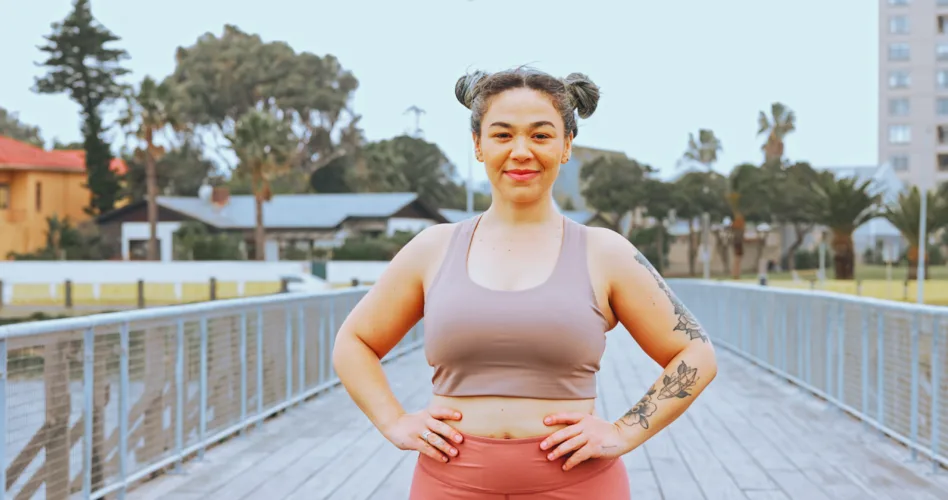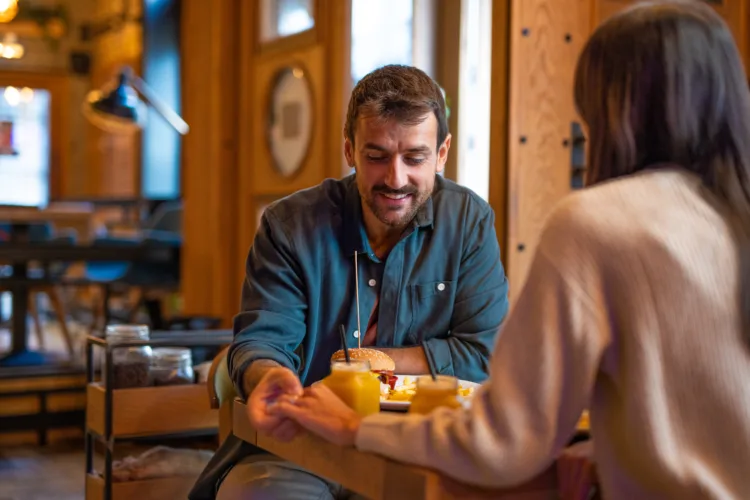
We’ve all been influenced by something we see on social media — whether it’s new clothes to buy, a gadget to try or a restaurant to sample, we have all taken something we saw online and put it to the test ourselves.
For better or worse.
And while some trends are totally harmless and might have a great payout –– like niche indie bands you would have never discovered without hearing their music on social media –– other trends aren’t as user friendly.
What is SkinnyTok?
SkinnyTok is a corner of TikTok where the focus circles around achieving and maintaining a slim body. It’s populated with videos that range from workout routines and calorie counting tips to “what I eat in a day” segments, often emphasizing minimal food intake. Many creators on SkinnyTok share their personal fitness journeys, offering suggestions to those looking to lose weight or tone their bodies.
Part of what makes SkinnyTok alluring is its fast-paced, visually engaging content. Users are drawn to the bite-sized videos that showcase dramatic physical transformations, offering a glimpse of what they perceive as potential success stories. It provides a sense of hope that they, too, might be able to achieve this physical appearance in a short amount of time.
The hashtag not only reflects a desire for physical fitness, but often embodies societal pressures and beauty standards, perpetuating the idea of thinness as an ideal. And by promoting it in a way that looks achievable and easy via the immediate gratification that is internet content, it provides viewers with a potential false sense of hope.
Does this mean SkinnyTok is dangerous?
While SkinnyTok’s motive is to provide content to inspire individuals who are seeking healthier lifestyles, pursuing this kind of content should come with a warning.
Promoting unrealistic standards
SkinnyTok often portrays an unattainable standard of beauty that focuses on being thin regardless of the implications. This can pressure viewers to pursue unrealistic body goals, leading to dissatisfaction with their own bodies and potentially triggering or exacerbating eating disorders.
Increasing dissatisfaction
Exposure to SkinnyTok can contribute to negative self-image and decreased self-esteem. For vulnerable individuals, constant comparison to others’ seemingly perfect bodies can lead to feelings of inadequacy and anxiety, especially if they are not experiencing success in their attempt at the trends they see online.
Encouraging dangerous habits
Some content on SkinnyTok glorifies restrictive dieting, excessive exercise or extreme weight loss methods, which can be harmful if not approached cautiously and prudently. The promotion of potentially dangerous diet trends can influence impressionable viewers to adopt harmful practices in the hope of looking like the content creator.
Little to no professional insight
Unlike health professionals, most content creators are not certified in nutrition or fitness. As a result, they might promote inaccurate or misleading information that viewers could adopt without understanding the potential health risks. This makes it incredibly important to do your own research when considering the pursuit of a new weight loss or exercise trend.
Normalization of disordered eating habits
Videos showcasing minimal calorie intake or extreme diet plans can unintentionally normalize disordered eating patterns. Repeated exposure to such content can influence viewers to perceive these behaviors as acceptable or even necessary. This can lead to long term issues if not appropriately addressed.
Triggering content
For individuals already struggling with body image issues or eating disorders, SkinnyTok may serve as a trigger. The constant portrayal of thinness as the ideal could exacerbate existing conditions or hinder recovery.
Navigating SkinnyTok responsibly
To avoid the negative influences associated with SkinnyTok, it’s crucial for users to approach the trend with critical awareness:
- When it comes to online content, critically evaluate the content you consume. Recognize that online personas often present an idealized version of reality;
- Platforms like TikTok should strive to highlight diverse body types and focus on holistic health rather than mere physical appearance. You can help by following users with a variety of diverse content and physical appearances;
- Seek fitness or dietary advice from certified professionals who can provide personalized and safe recommendations, not from influencers who do not have a professional background;
- Social media can be a powerful tool for support and empowerment when communities prioritize mental well-being and celebrate all body types — look to be a supportive member of pages that prioritize these ideals.
So, while SkinnyTok offers a community of fitness enthusiasts, its potential dangers cannot be overlooked. By fostering an environment of inclusivity and informed consumption, you can navigate this trend without falling into the pitfalls of unrealistic standards and unhealthy practices.
Need additional support?
If you have been struggling with the influences of social media, you’re not alone. Help is available no matter where in the recovery journey you find yourself, even if it’s right at the beginning.
With professional support and personalized treatment programs, recovery is within reach. To learn more, call Seeds of Hope at 610-897-0508 or fill out an online contact form to get started today.


